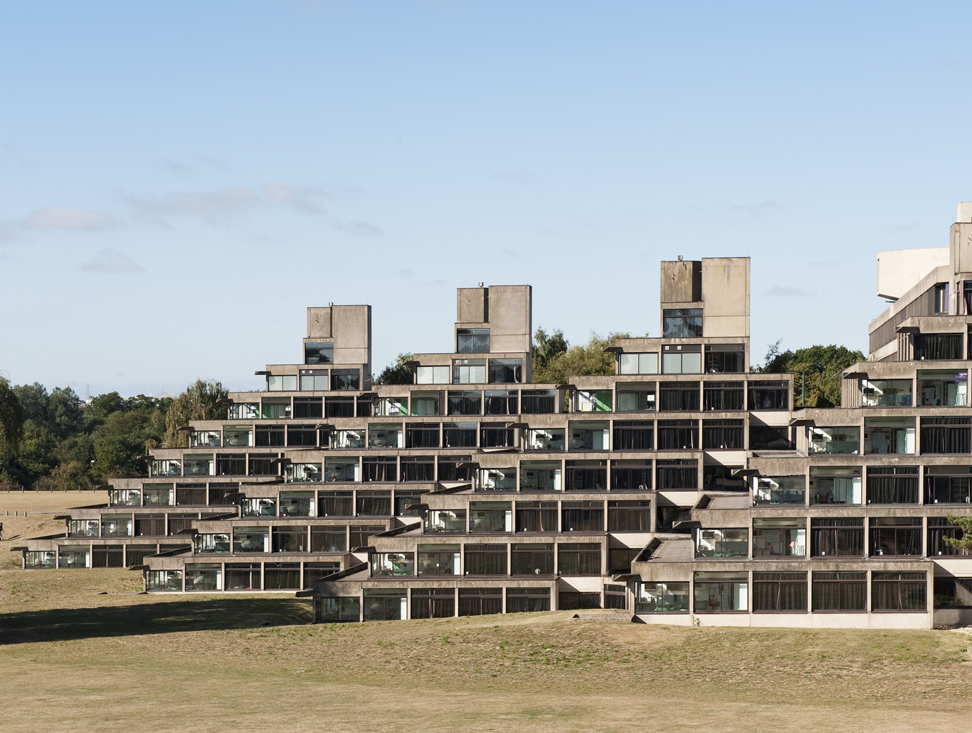Modern building
The term ‘modern’ is an ambiguous one that can be interpreted in a number of ways.
In its widest sense, ‘modern’ refers to things from the present or the immediate past. This may include the adoption of recent techniques, methods or ideas.
In historic terms however, the early modern period is considered to follow the late middle ages of the post-classical era, running from approximately c. 1500 to c. 1800. It is characterised by a period of exploration and globalisation and a move away from medieval systems of politics and economics.
The late modern period follows directly on from this, including the industrial revolution, and runs up to contemporary history, which is considered to include the period from around 1945 to the present day.
Modern architecture and modern buildings however are generally considered to have emerged in the early 20th century and are characterised by the use of glass, steel and reinforced concrete.
This is sometimes associated with the stylistic terms ‘modernism’ or ‘modernist’, however, these have a very specific meaning associated with a design philosophy that focussed on the function of buildings, approached from an analytical viewpoint, a rational use of materials, the elimination of ornament and decoration, and openness to structural innovation.
Modernism developed across all artistic fields, and in architecture encompassed a number of variations, including Futurism, Constructivism, De Stijl, and Bauhaus.
For more information see: Modernism.
Modernism as a style was followed by post-modernism, also known as ‘pomo’; an architectural style that emerged in the late 1960s as a reaction against modernism, which was considered by some to be too bleak, formal and austere. Postmodern architecture is characterised by its highly-decorative, whimsical and kitsch aesethetic. It incorporates stylistic references that are often playful and symbolic, using shape and colour and applying structural forms from classical architecture to modern designs.
For more information see: Post-modernism.
Modern building is sometimes contrasted with ‘traditional building’, a very loose term that typically refers to buildings from before the 20th century.
For more information see: Traditional building.
The phrase 'modern methods of construction' refers to ways of working more effectively to achieve more without using more, and centres around the use of off-site construction techniques that can benefit from factory conditions and mass production techniques. This emerged following the second world war due to the need to replace lost housing quickly, but it has seen renewed focus in recent years due to the modern housing crisis and a desire to reduce costs and improve quality, speed and health and safety.
For more information see: Modern methods of construction.
[edit] Related articles on Designing Buildings Wiki
- Architectural styles.
- Art Moderne.
- Bauhaus.
- BEST Products showrooms.
- Brazilian Modernism lecture.
- City beautiful.
- Contextualism.
- Demolishing Modernism: Britain's lost post-war gems.
- Form follows function.
- High-tech architecture.
- International Style.
- Louis Kahn.
- Modern methods of construction.
- Modernism.
- Neo-futurism.
- Nineteenth century architecture.
- Postmodern architecture.
- Traditional building.
- Zeitgeist.
Featured articles and news
Homes England creates largest housing-led site in the North
Successful, 34 hectare land acquisition with the residential allocation now completed.
Scottish apprenticeship training proposals
General support although better accountability and transparency is sought.
The history of building regulations
A story of belated action in response to crisis.
Moisture, fire safety and emerging trends in living walls
How wet is your wall?
Current policy explained and newly published consultation by the UK and Welsh Governments.
British architecture 1919–39. Book review.
Conservation of listed prefabs in Moseley.
Energy industry calls for urgent reform.
Heritage staff wellbeing at work survey.
A five minute introduction.
50th Golden anniversary ECA Edmundson apprentice award
Showcasing the very best electrotechnical and engineering services for half a century.
Welsh government consults on HRBs and reg changes
Seeking feedback on a new regulatory regime and a broad range of issues.
CIOB Client Guide (2nd edition) March 2025
Free download covering statutory dutyholder roles under the Building Safety Act and much more.
Minister quizzed, as responsibility transfers to MHCLG and BSR publishes new building control guidance.
UK environmental regulations reform 2025
Amid wider new approaches to ensure regulators and regulation support growth.
BSRIA Statutory Compliance Inspection Checklist
BG80/2025 now significantly updated to include requirements related to important changes in legislation.























